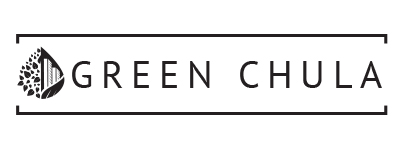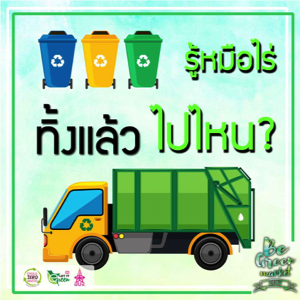Lily Zeng
3rd year student
Facutly of Communication Arts
BANGKOK – As university students, we might find ourselves rushing to class in the morning, seldom having the time to sit down at home for proper breakfasts. Our saviors of the day are typically the sandwiches you buy at the convenience store next to your house, a carton of milk, and perhaps an apple. After fulfilling your tummy with the fancy-schmancy gastronomy, you’re left with plastic wrappers of the sandwiches, the paperboard carton from the milk, and the core of the apple you finished. Now, the real struggle, you walk to the garbage cans in your faculty, and you face the world’s worst dilemma; which of this trash belong in which of these cans?
Usually, garbage cans are separated into three categories; yellow, green, and blue cans for general, wet, and recyclable wastes respectively. However, around the Chulalongkorn University campus, garbage cans are only separable by the colors yellow and green, representing general waste trash and recyclable trash. This makes the separating of trash slightly easier for you as you will only need to recognize two categories of trash.
The labels and signs on the garbage cans may seem pretty obvious and self-explanatory. It is also expected for people to already know of this common knowledge. However, many students in the campus do not know how to distinguish and group trash according to the materials of which they are made or composed. When 13 students were asked which category of the trash can a tissue paper belonged in, ten answered recyclable and three answered general.
As a matter of fact, because “tissue paper is usually made out of recycled paper, therefore the fibers are already shortened to the point where it cannot be recycled again.” (SF Environment).
It is clear that we weren’t properly educated on this matter. If students aren’t informed on the aims of having these trash cans and do not know how to group trash into their belonging category, it defeats the purpose of these trash cans being here in the first place. But fear not, the goal of this story is to teach you how to be a good “Chula Green” citizen, and explain to you in easy everyday language about how to separate trash. The least we can do for our environment is to educate ourselves and apply the knowledge acquired to our community.
The yellow trash cans that says “ขยะทั่วไป” or “General Waste” are also known as residual waste. These are wastes that cannot be recycled, such as non- recyclable plastics, polythene (plastic bags), hard plastics (plastic toys), kitchen scraps, glass, etc.
Wastes that cannot be dumped into the yellow trash cans are (1) medical waste, (2) paint cans, motor oil, wax, or petroleum, (3) rocks, bricks, and gravel, (4) electrical goods, and (5) hazardous waste. Simply put, generally, all household trash and office trash belong in the general wastes category.
The green trash cans that says “ขยะรีไซเคิล ” or “Recyclable Waste” are for recyclable plastics, all plastic bottles, papers, cardboards, glass bottles, aluminum, and metals.
If you are curious about the process and what happens after trash are sorted according to their categories, you can read more about it on Mina Intanate’s article “A Transparent Process,” also under the same theme of Chula Green.


When in doubt, remember that there are usually symbols on the packaging of the product that states whether or not it is recyclable. Below is a rule-of-thumb chart showing what each symbol represents.
As we are coming to an end of this article, we need to make sure that you can distinguish trash into their belonging categories. Let’s play a little game:
Does the following trash belong in the yellow or the green trash can?




Point the cursor on the impage to see the answers.
Now that you are prepped and ready to go, start becoming a true “Chula Green” citizen by taking small steps and begin by separating trash. Help make the recycling system efficient and productive. All contributions, no matter how small, will aid in the sustaining of our environment. Look at the trash you have at hand, be a part in making the recycling system an effective procedure to a green world.
References:
- https://www.aesirl.ie/home/what-goes-in-my-bin/general-waste-bin/
- http://www.huffingtonpost.com/entry/how-to-recycle-basics_us_578d7e8ce4b0c53d5cfab03d http://www.sita.co.uk/waste-as-a-resource/what-happens-to-waste/general-waste


Recent Comments